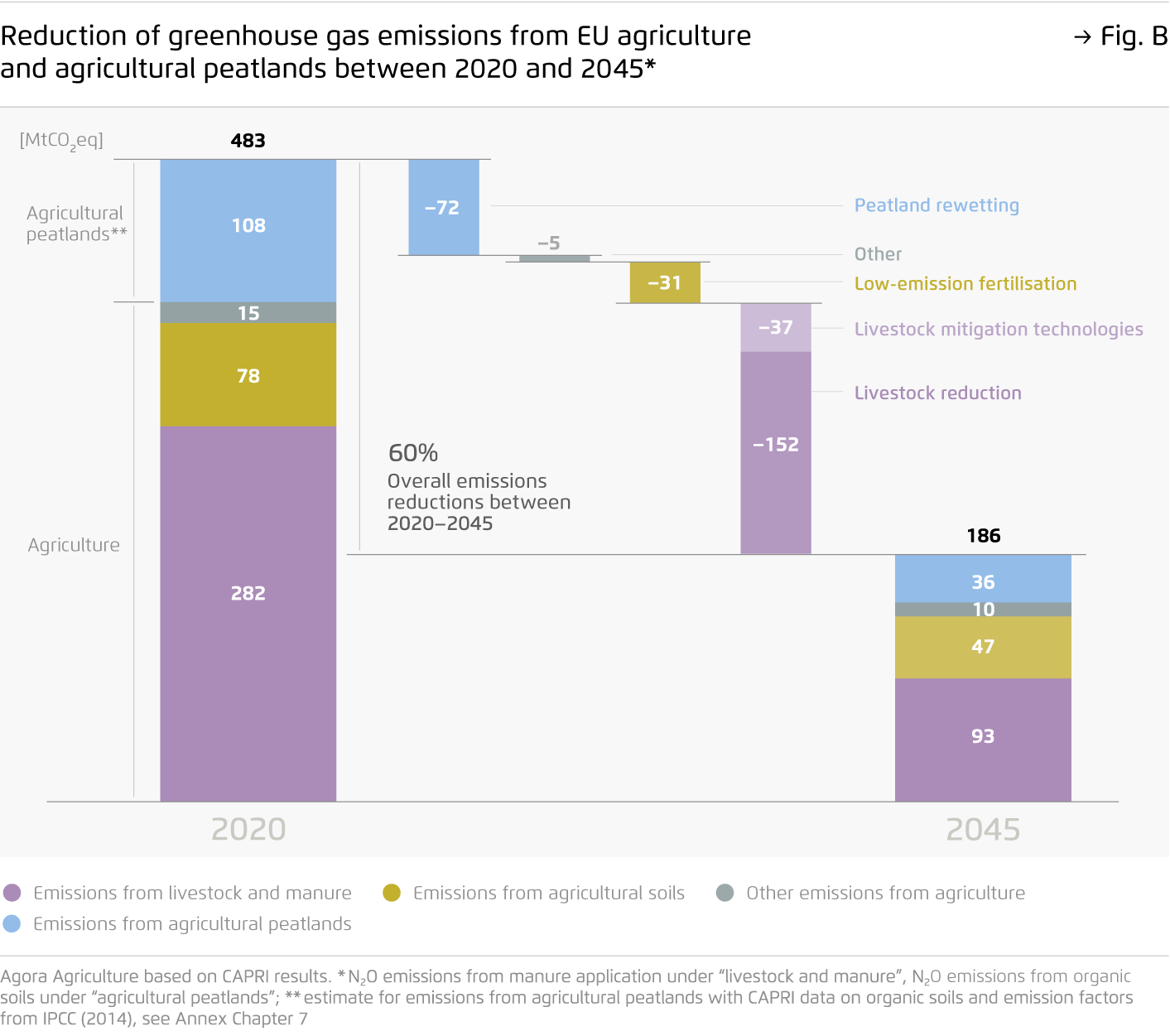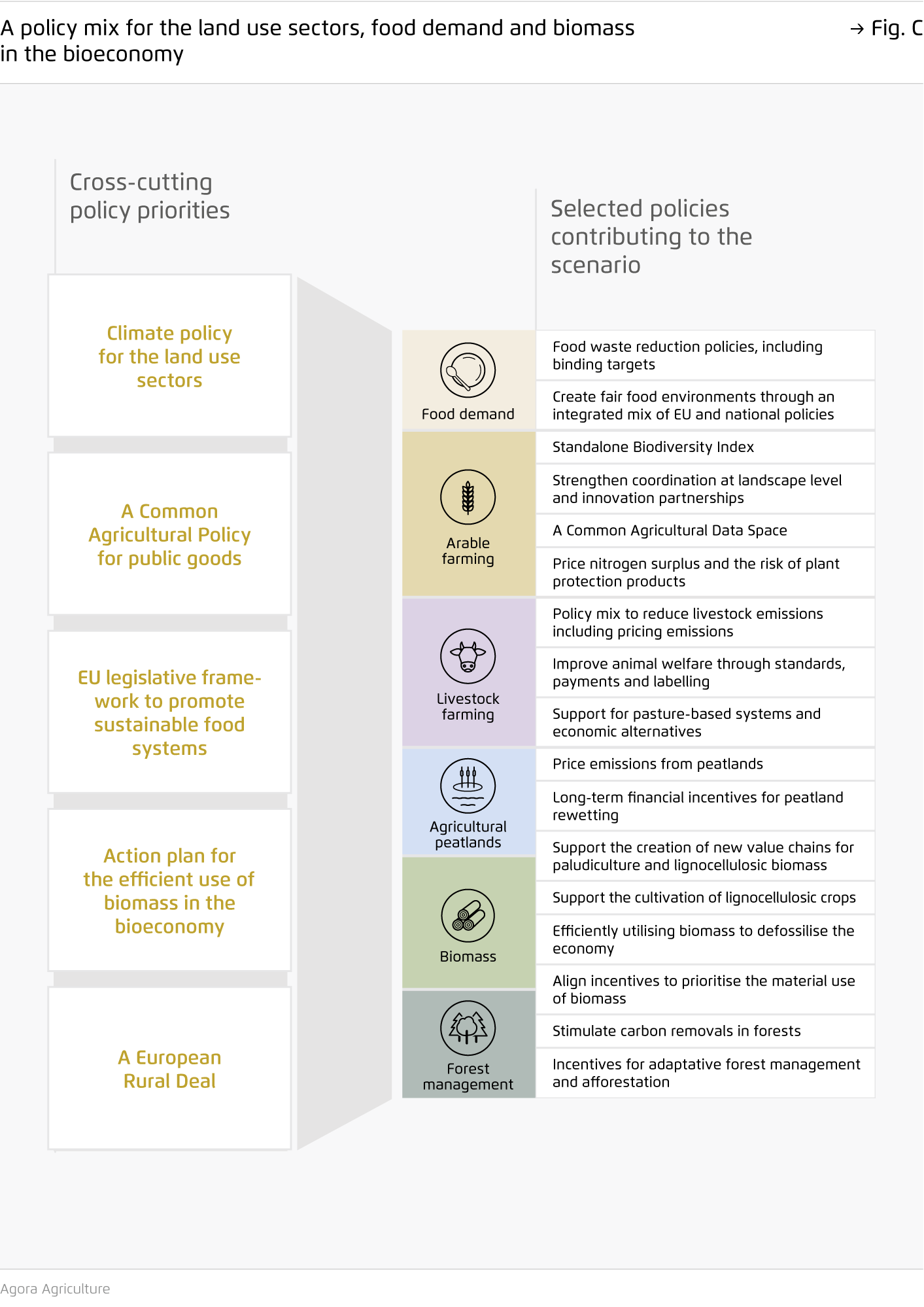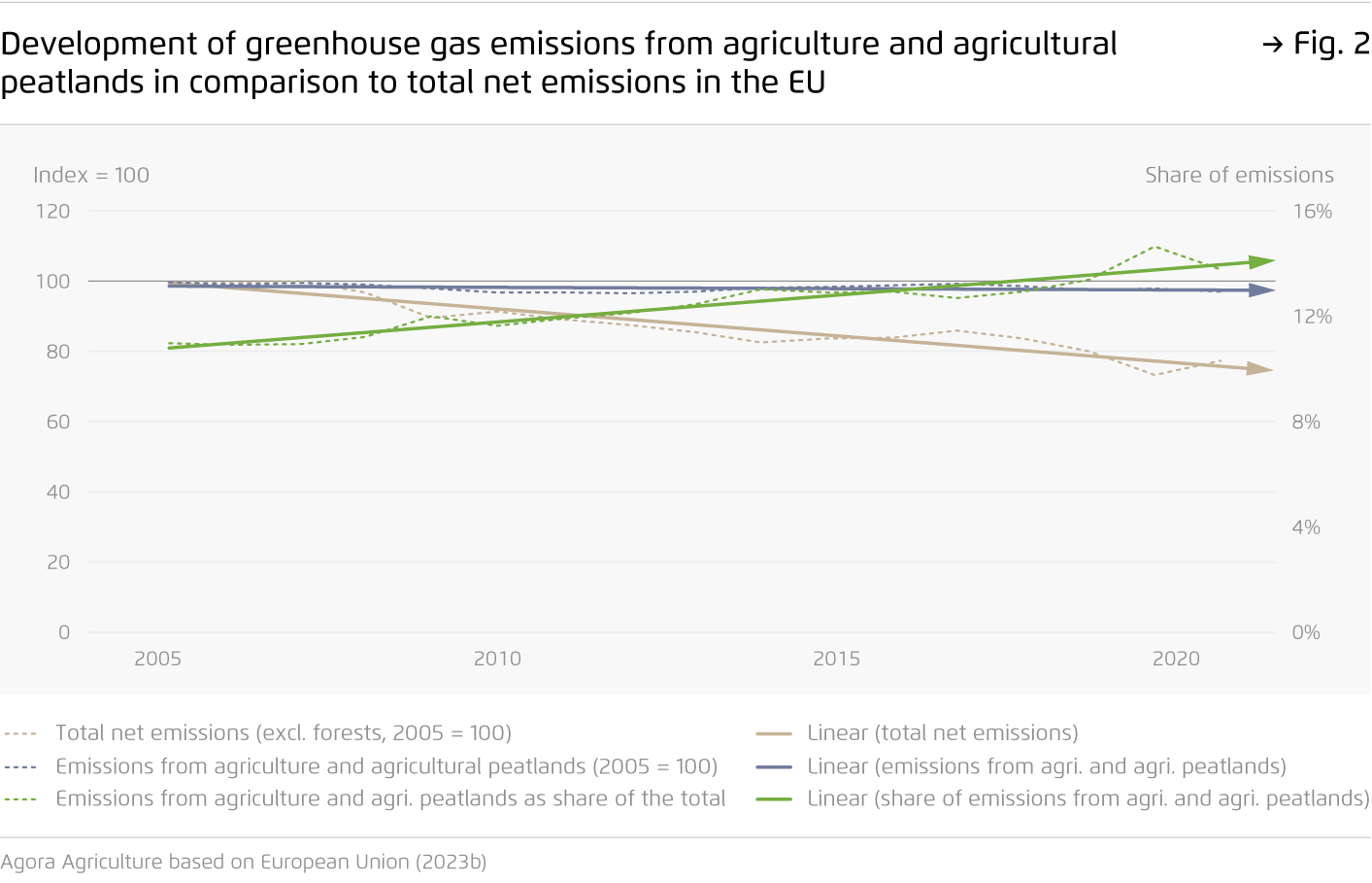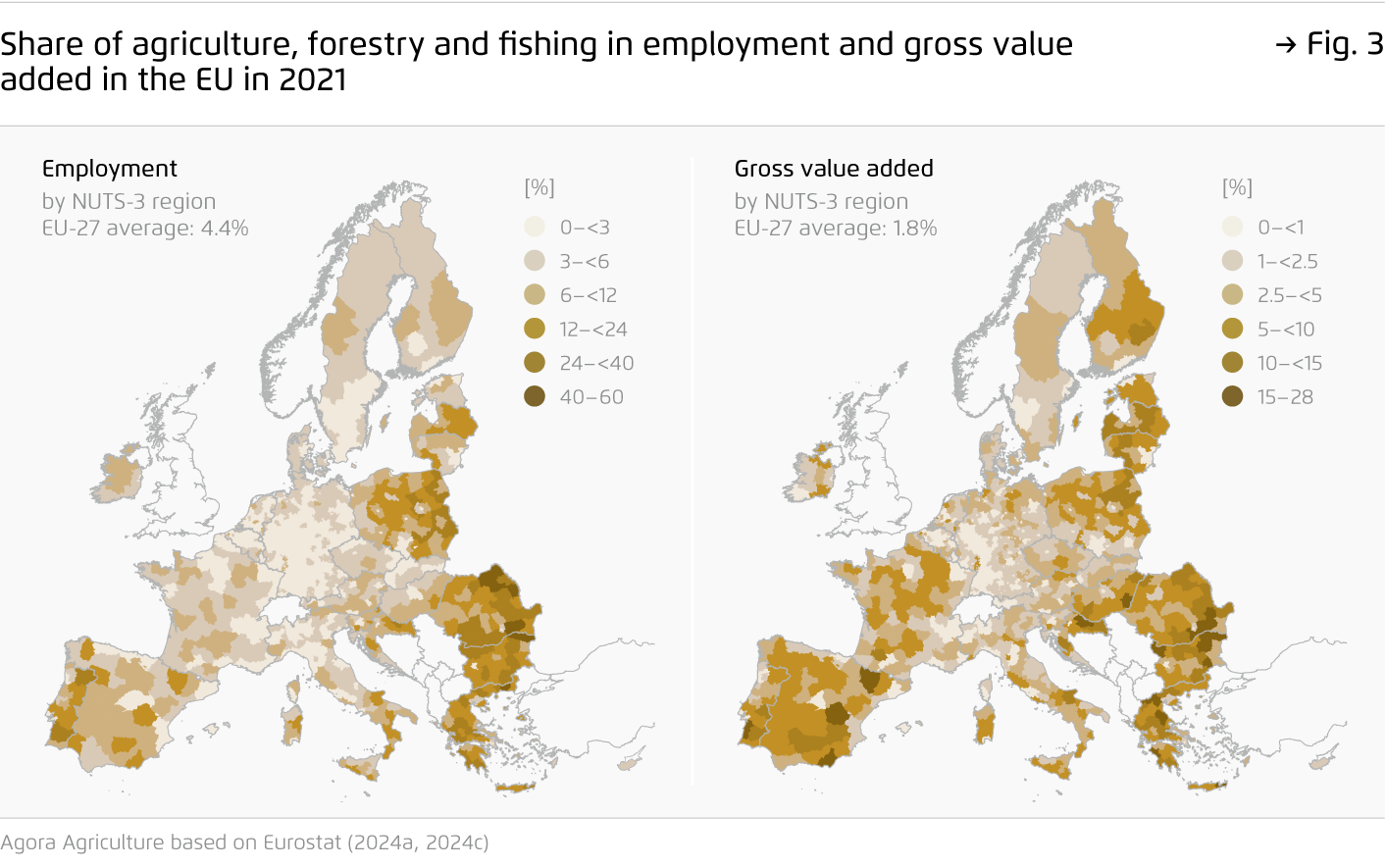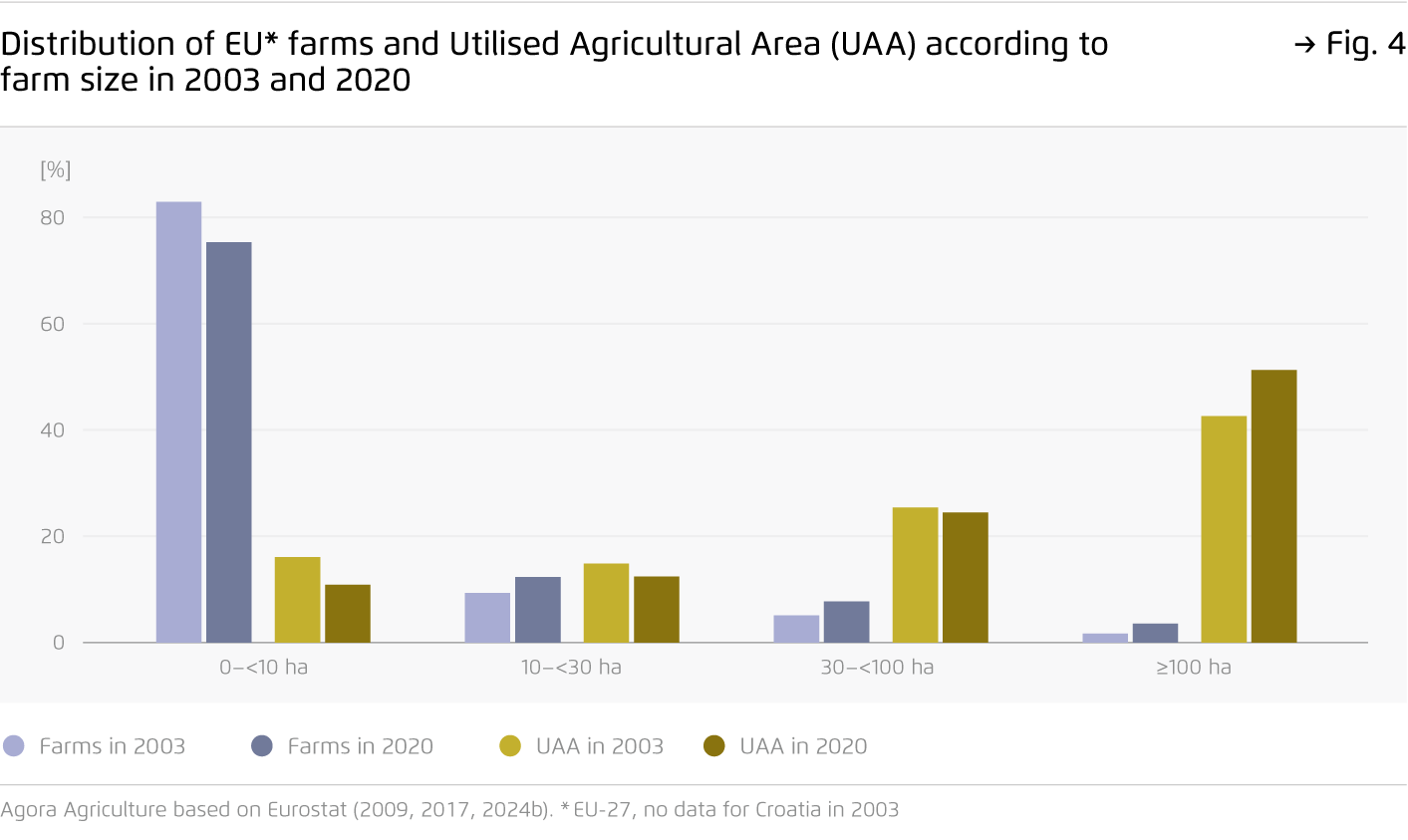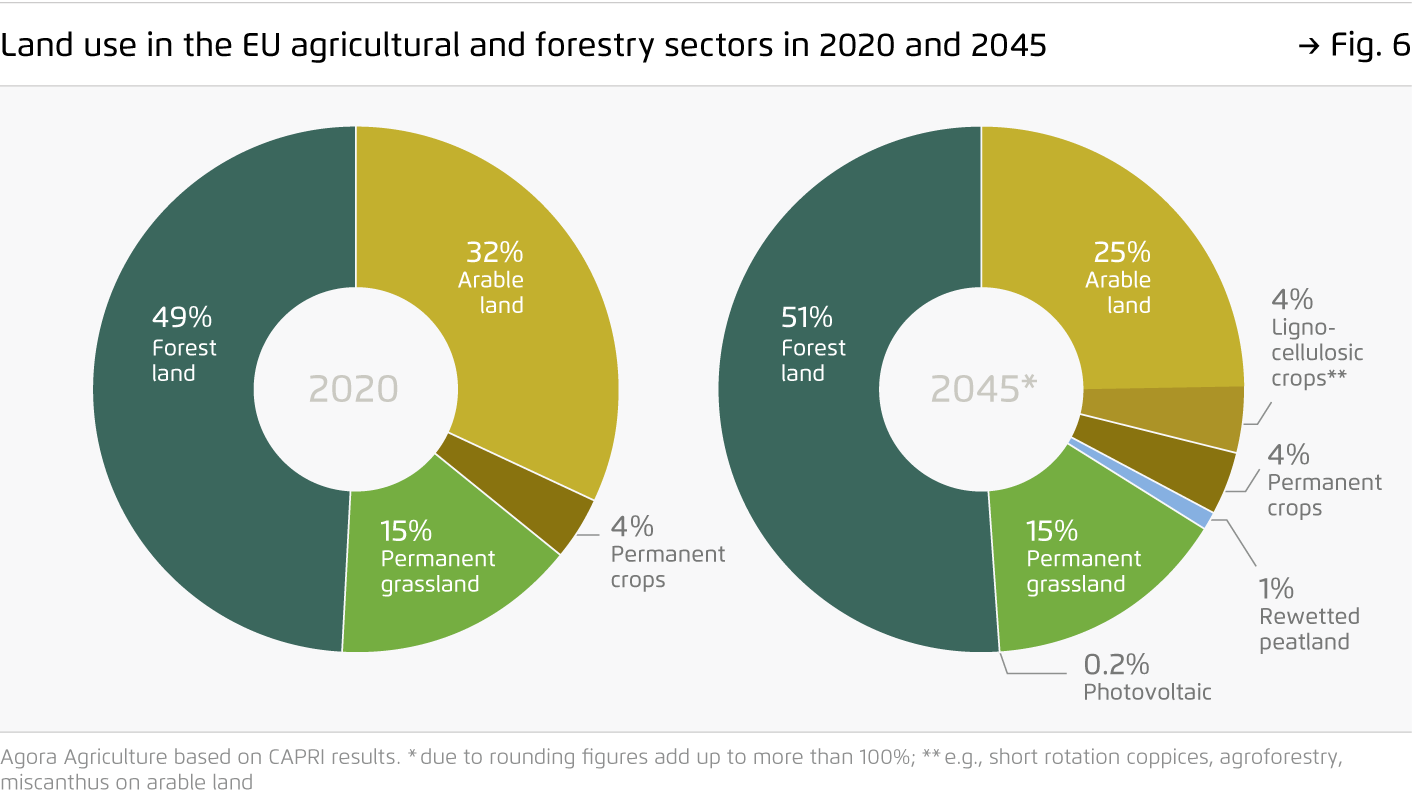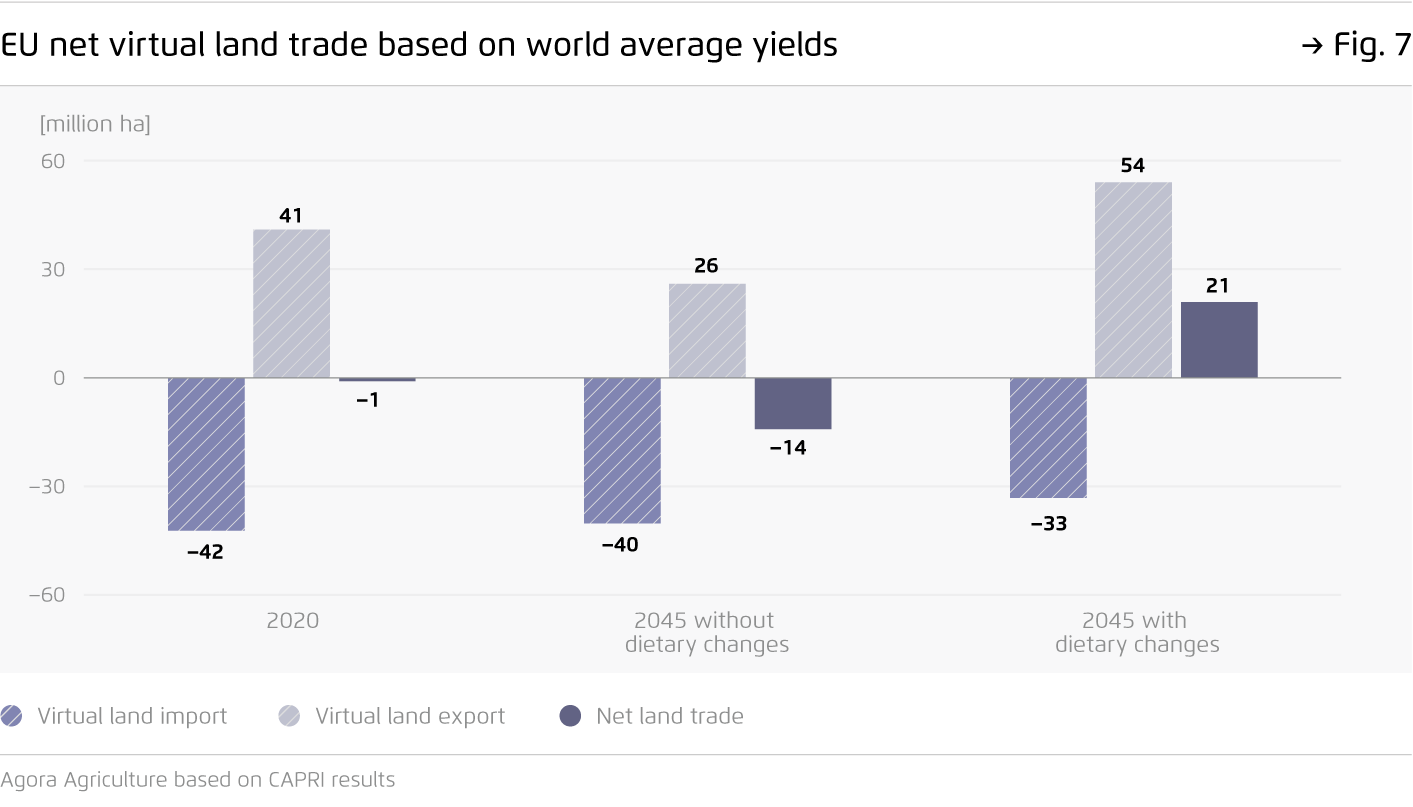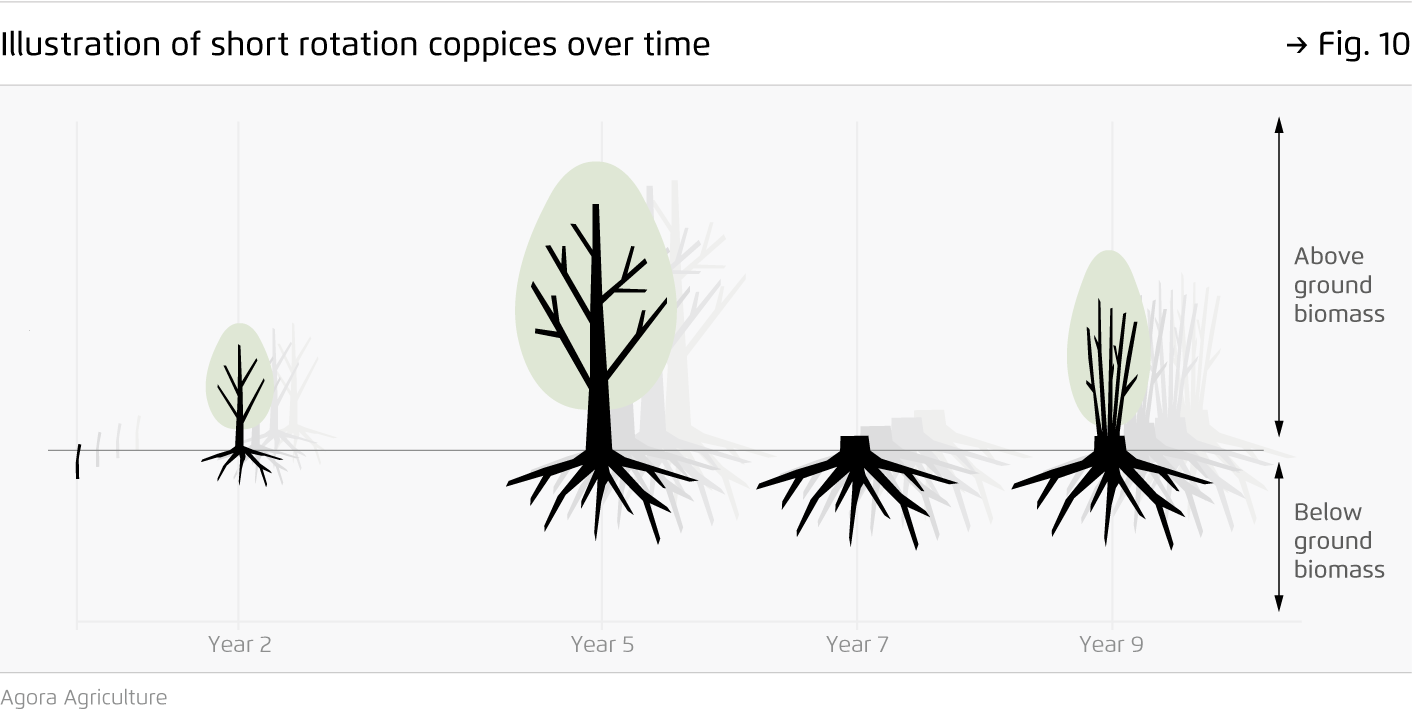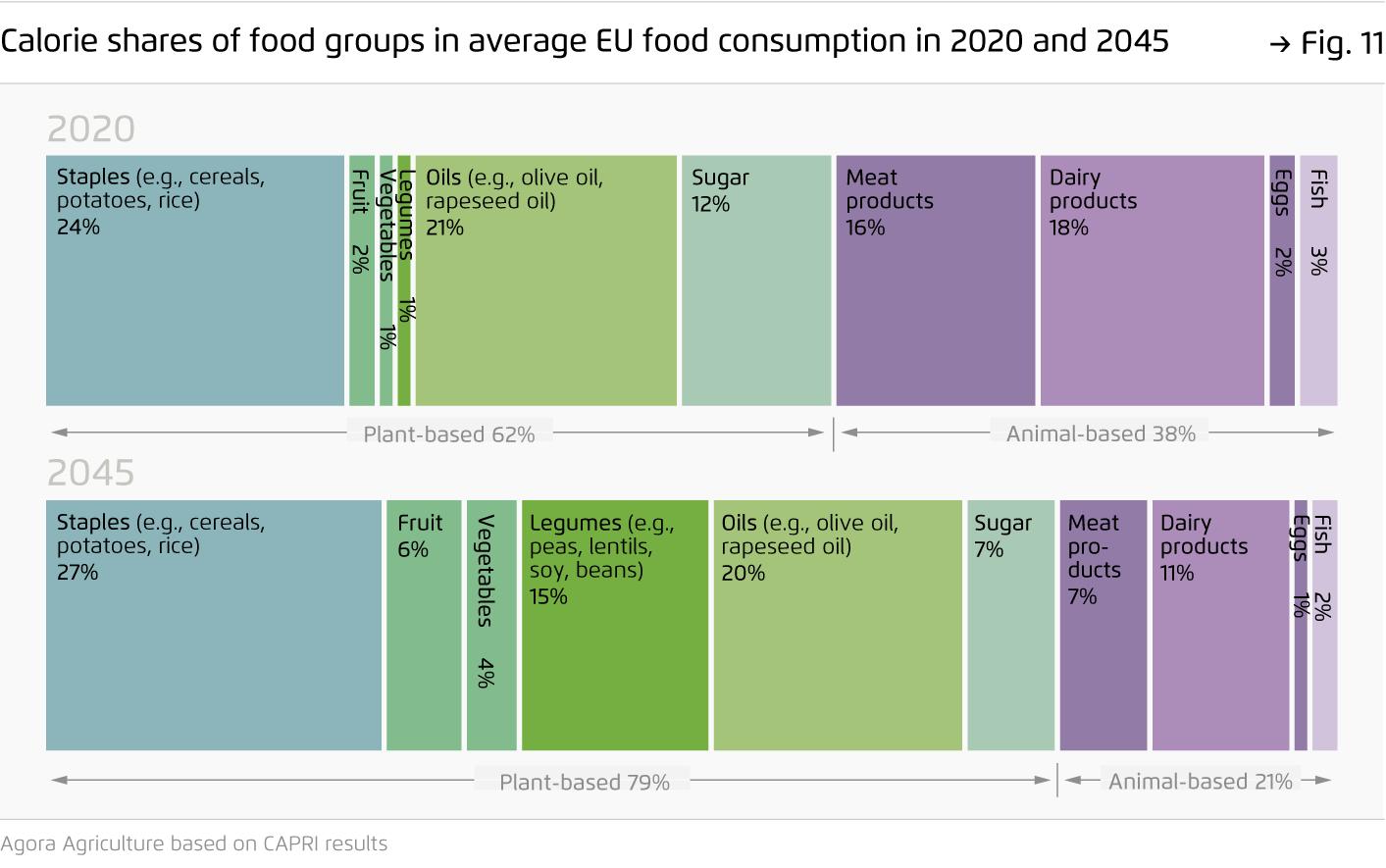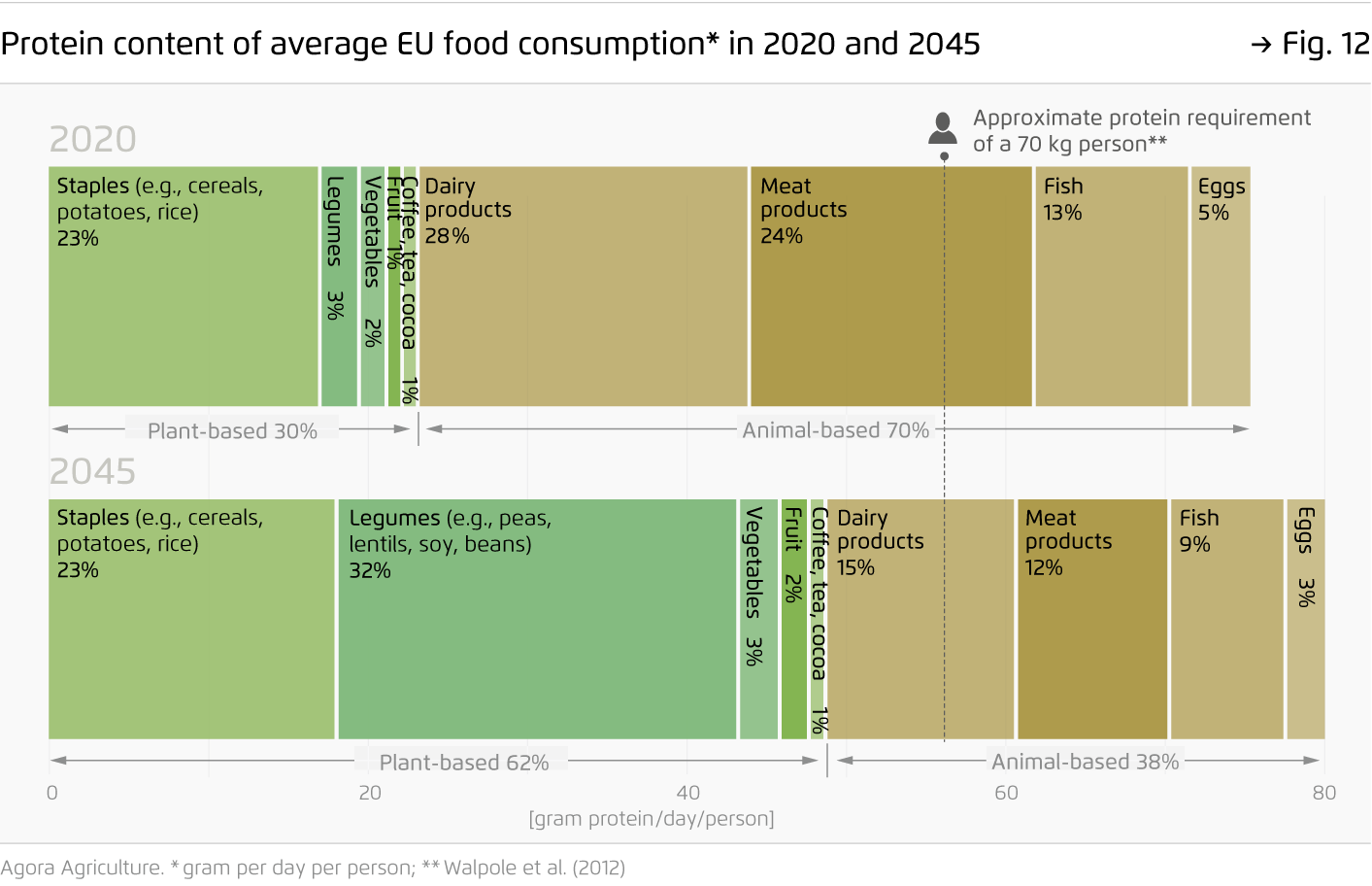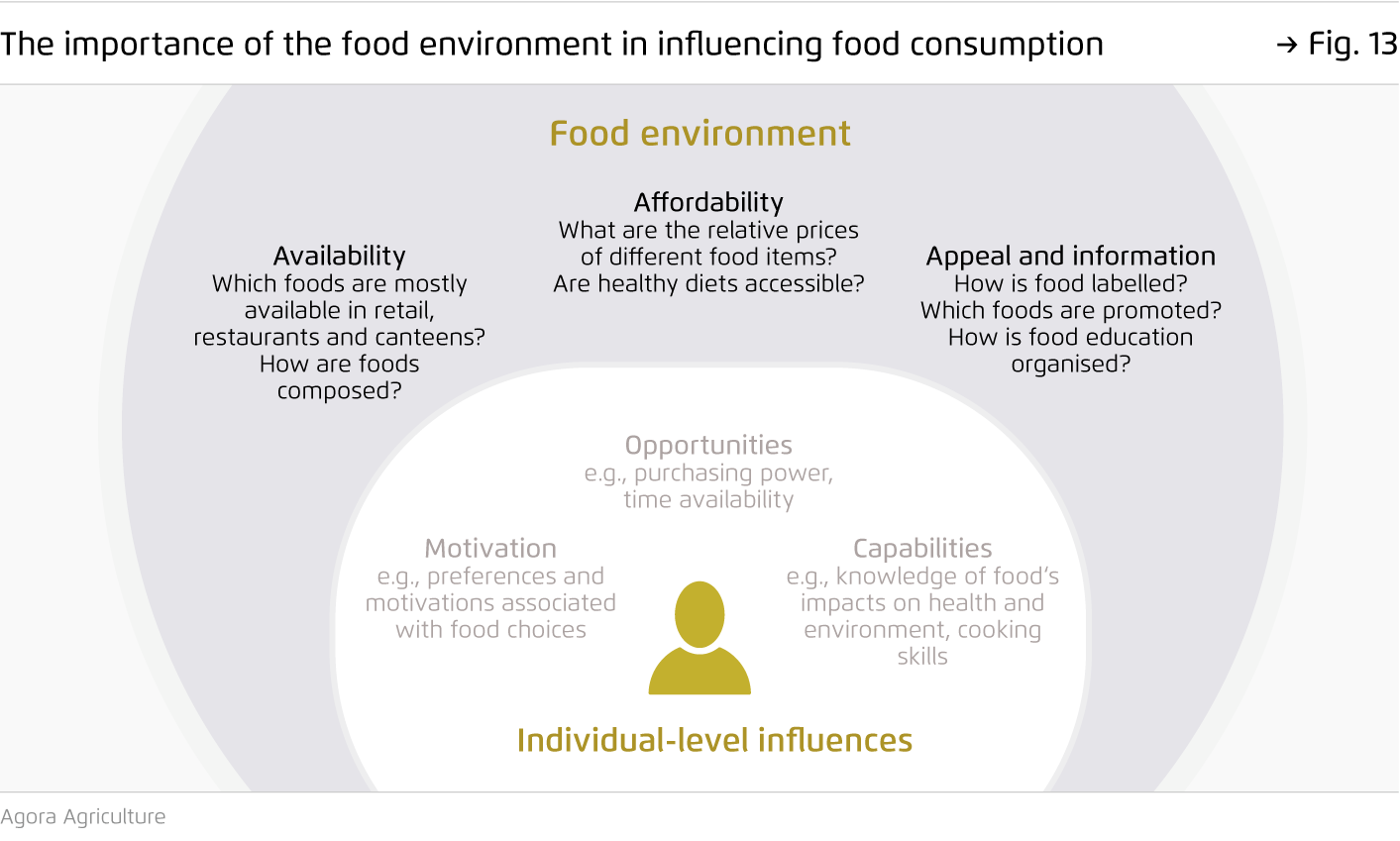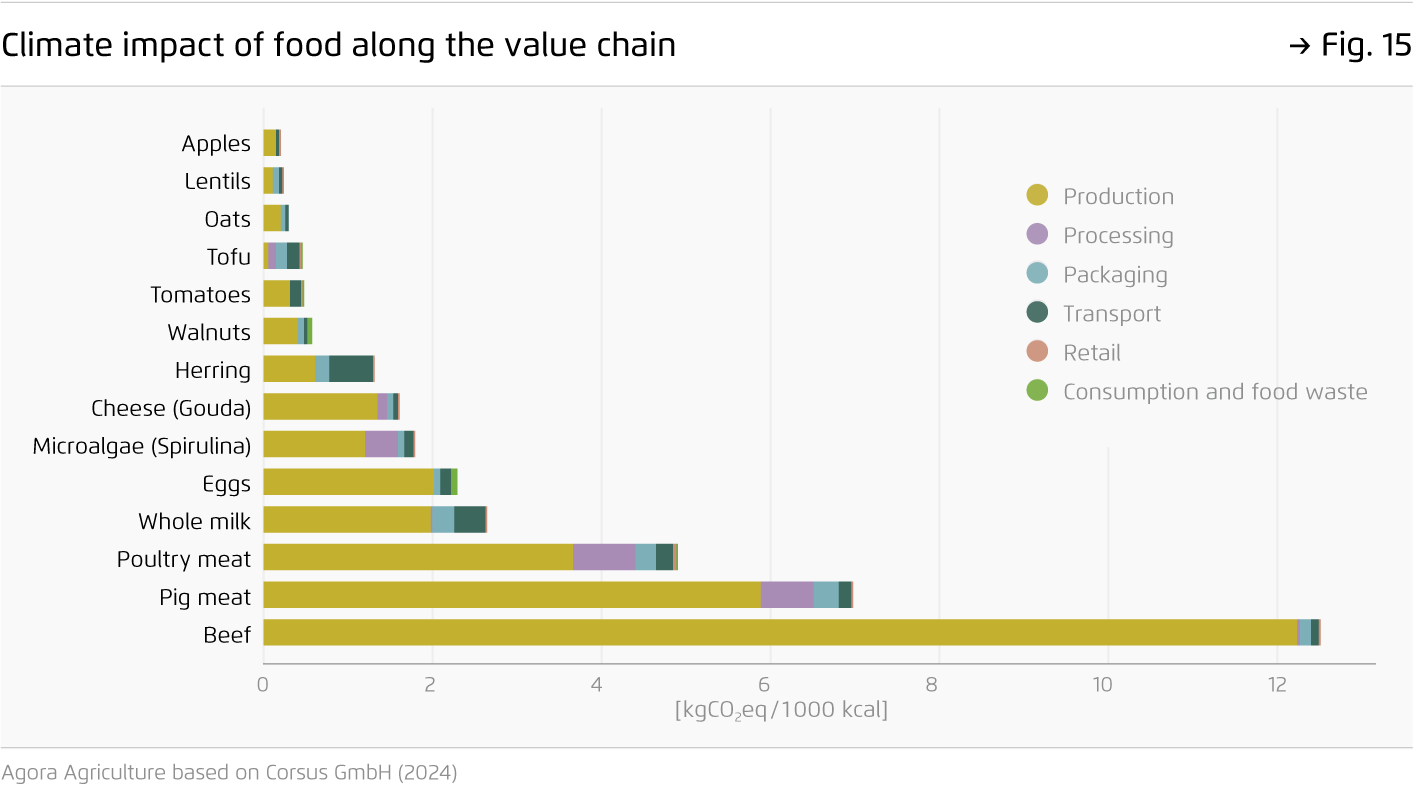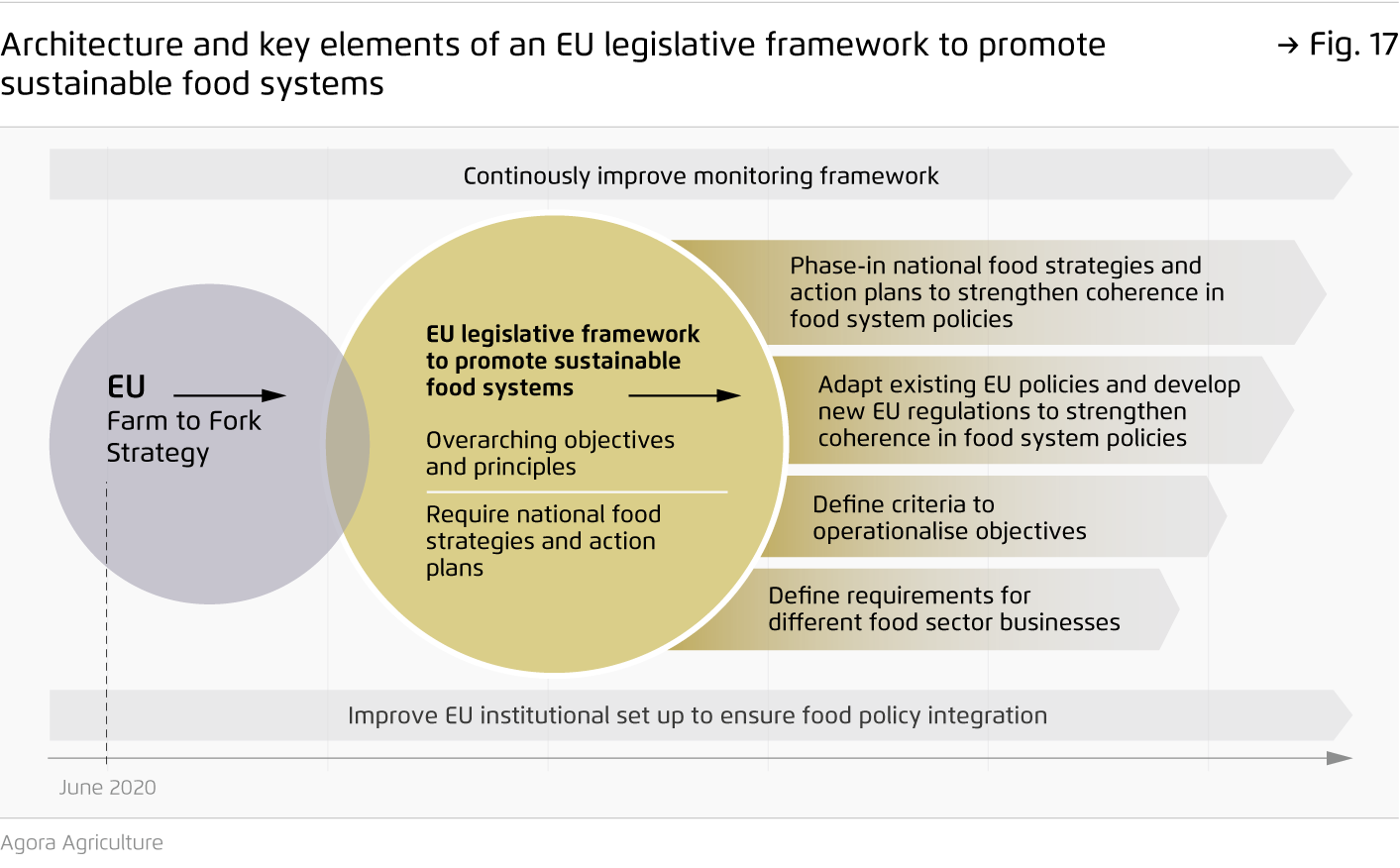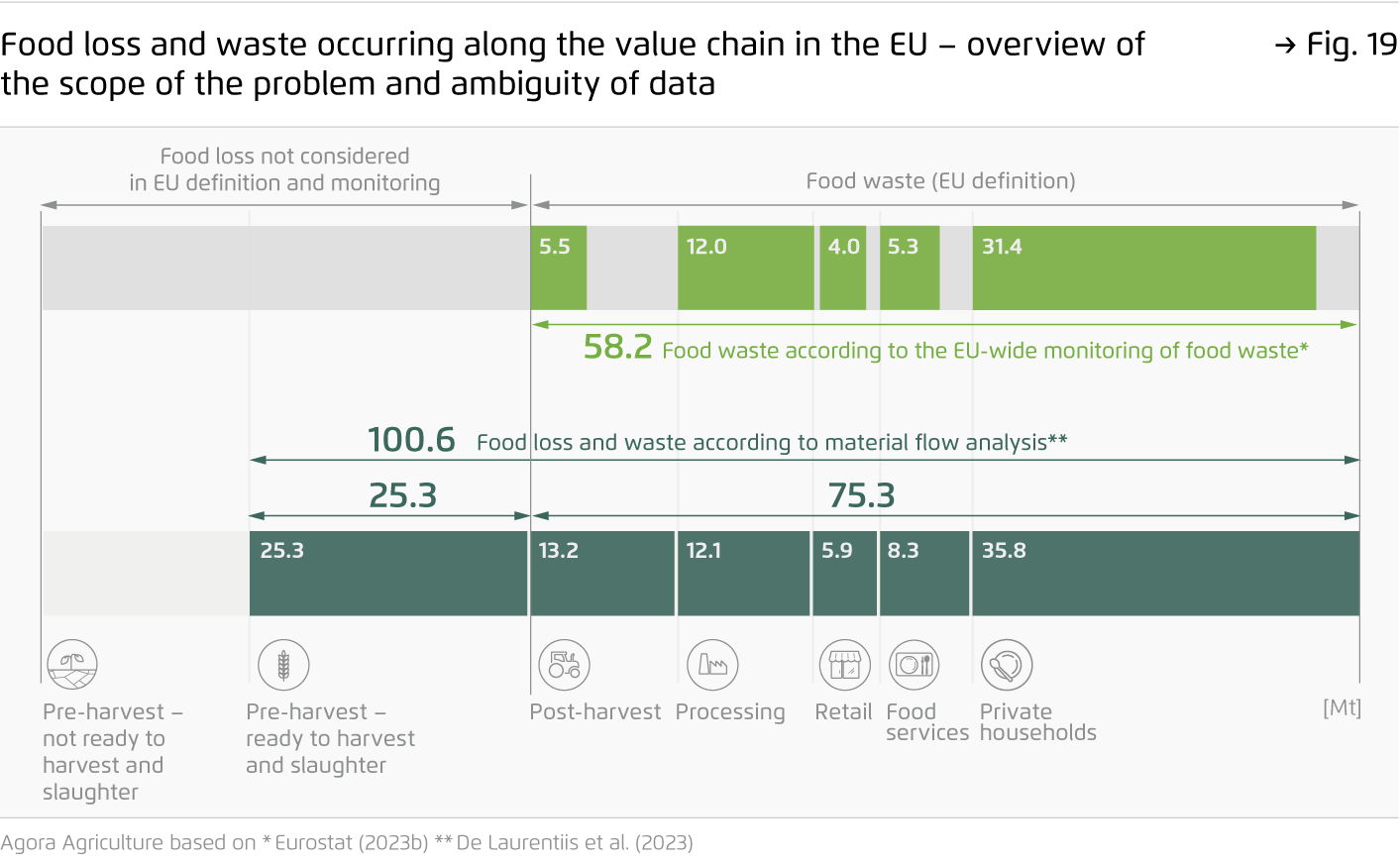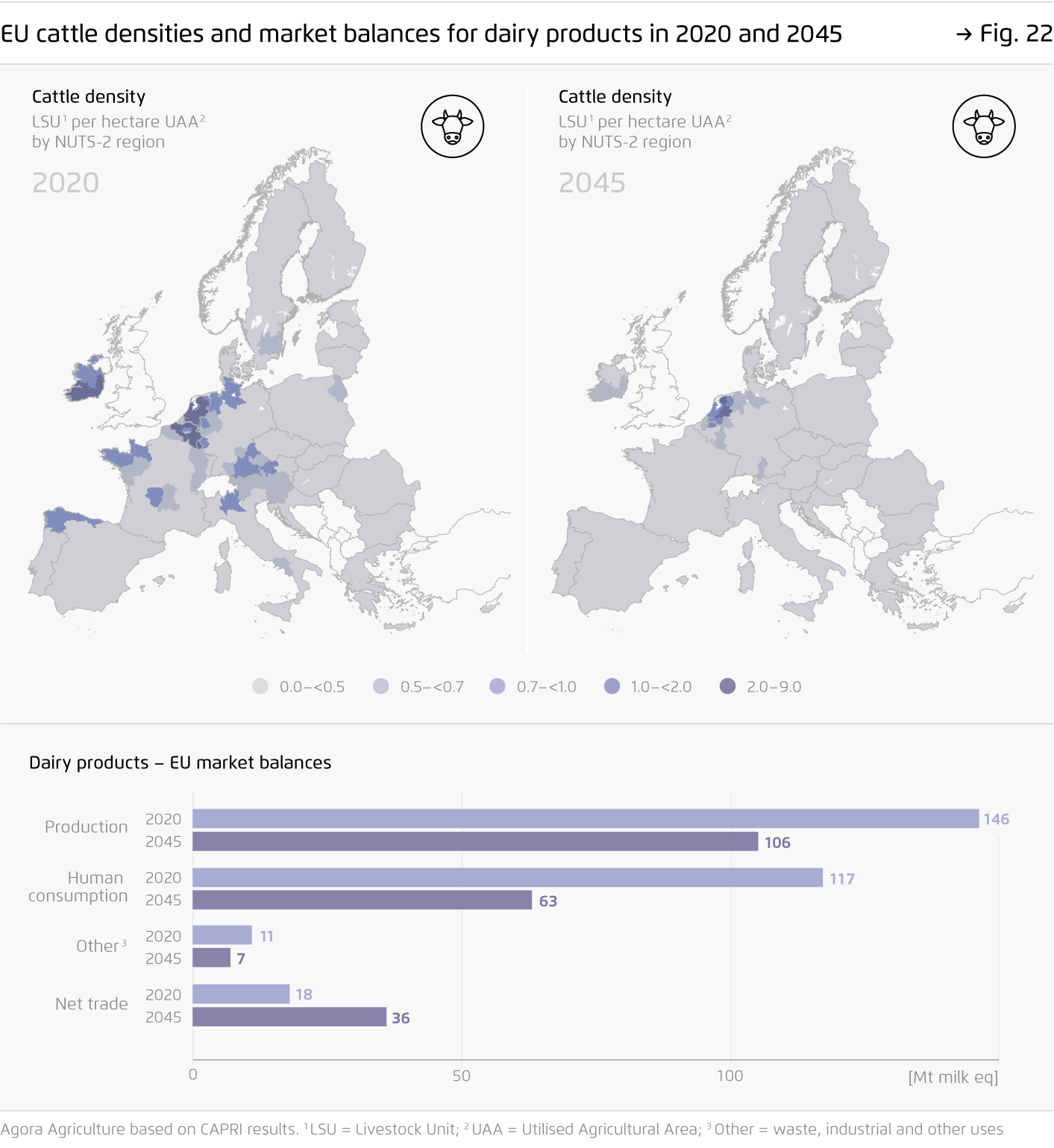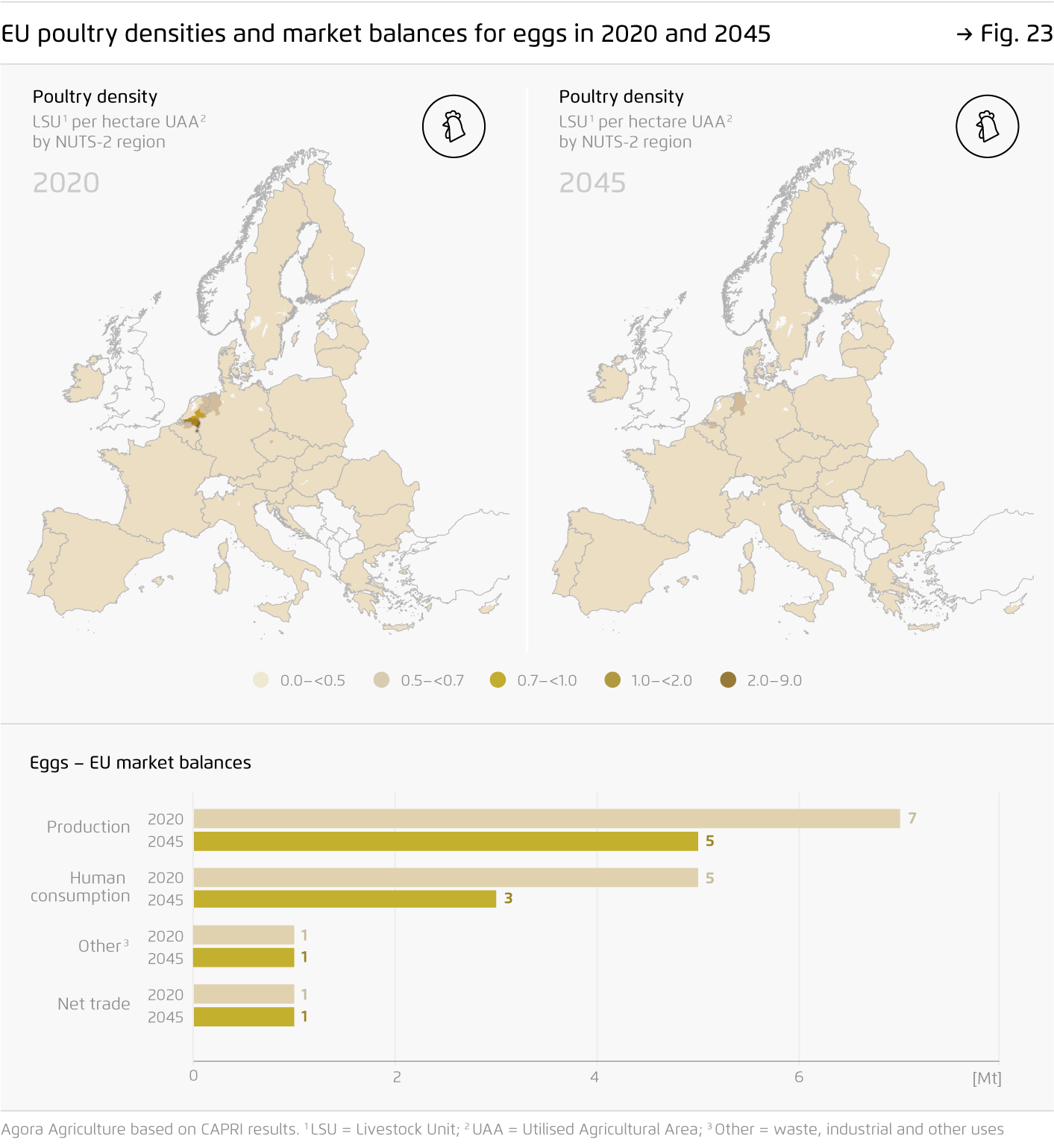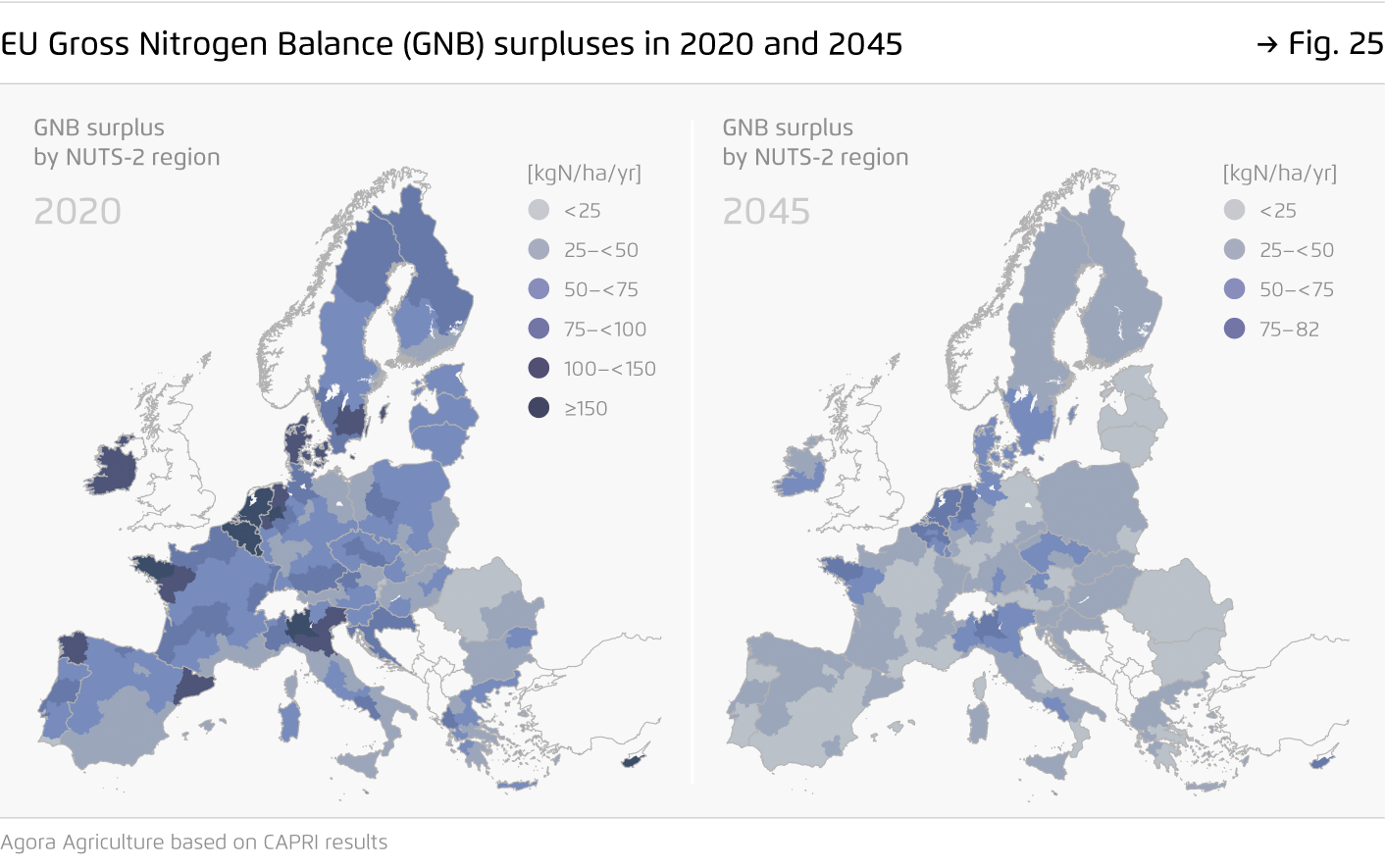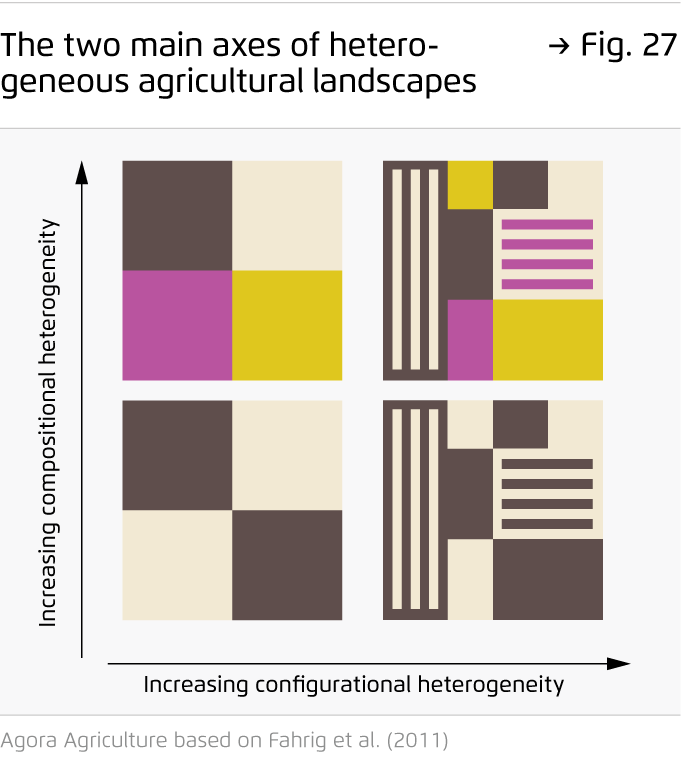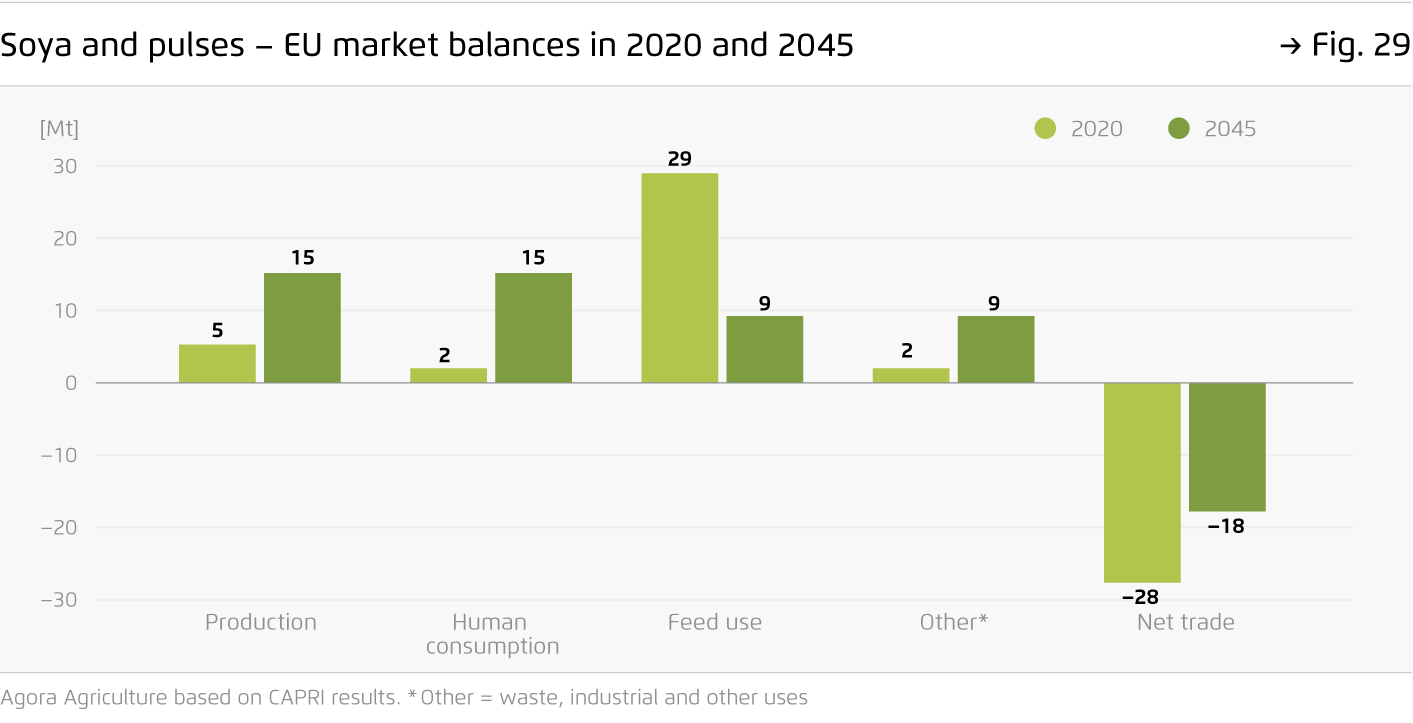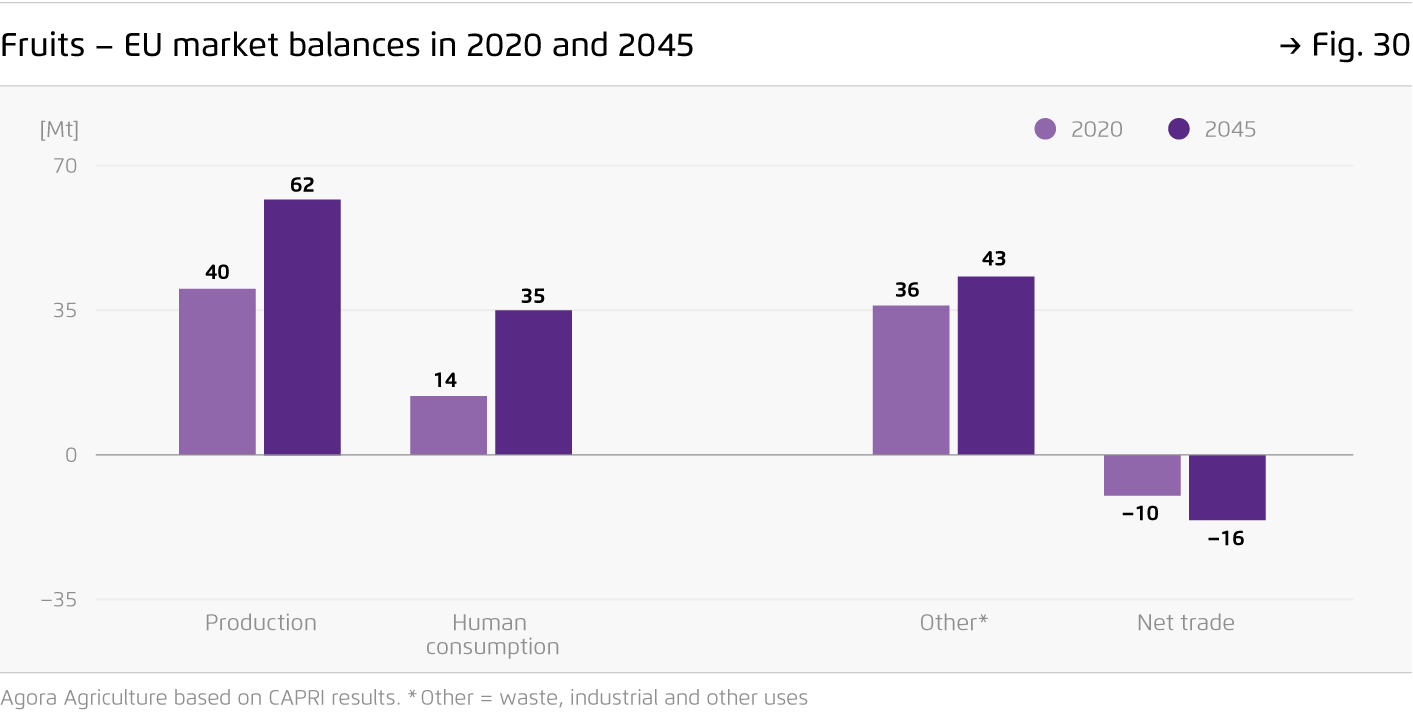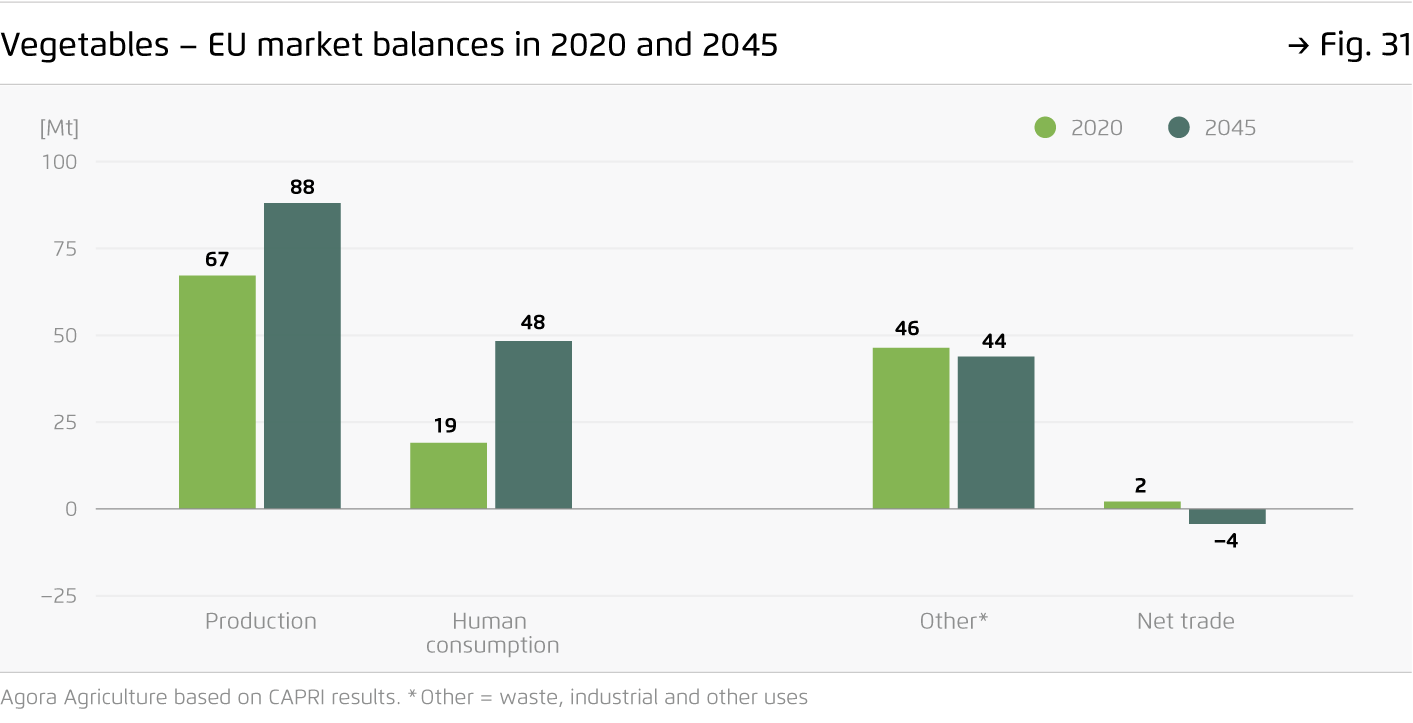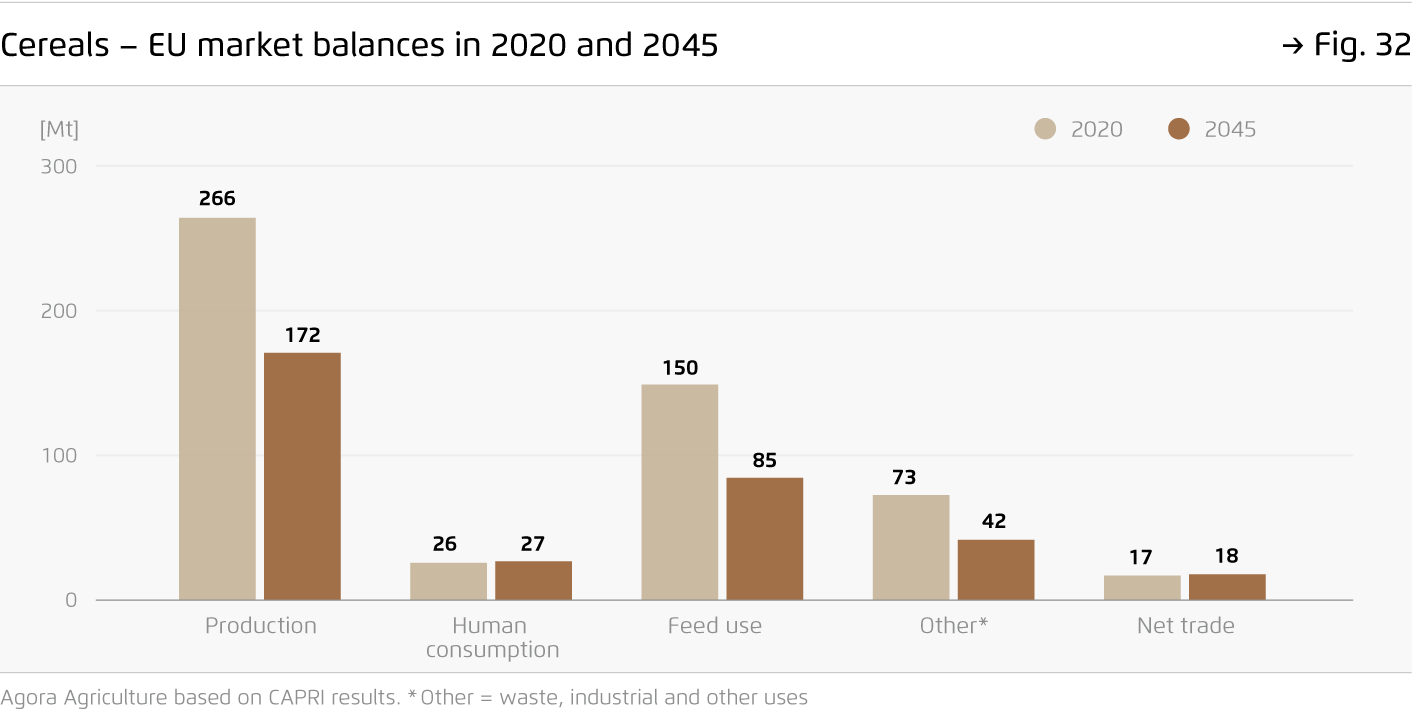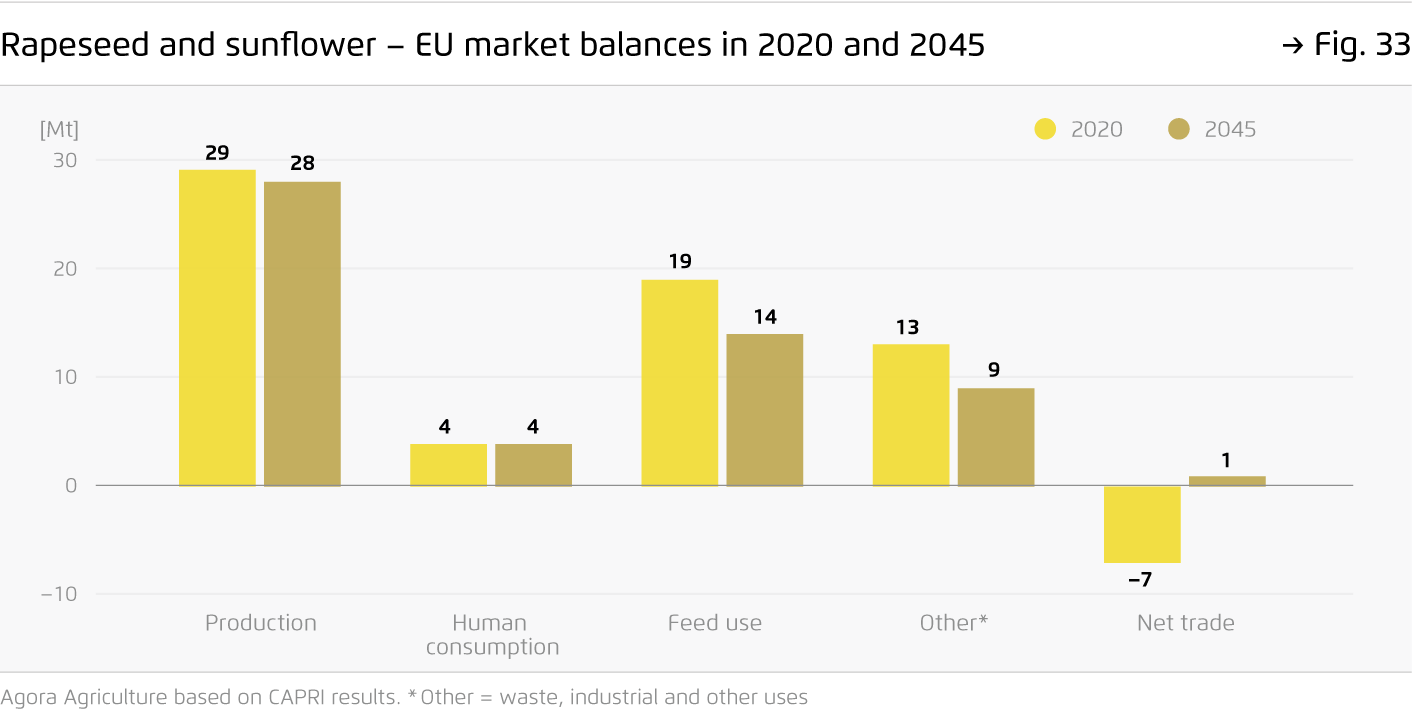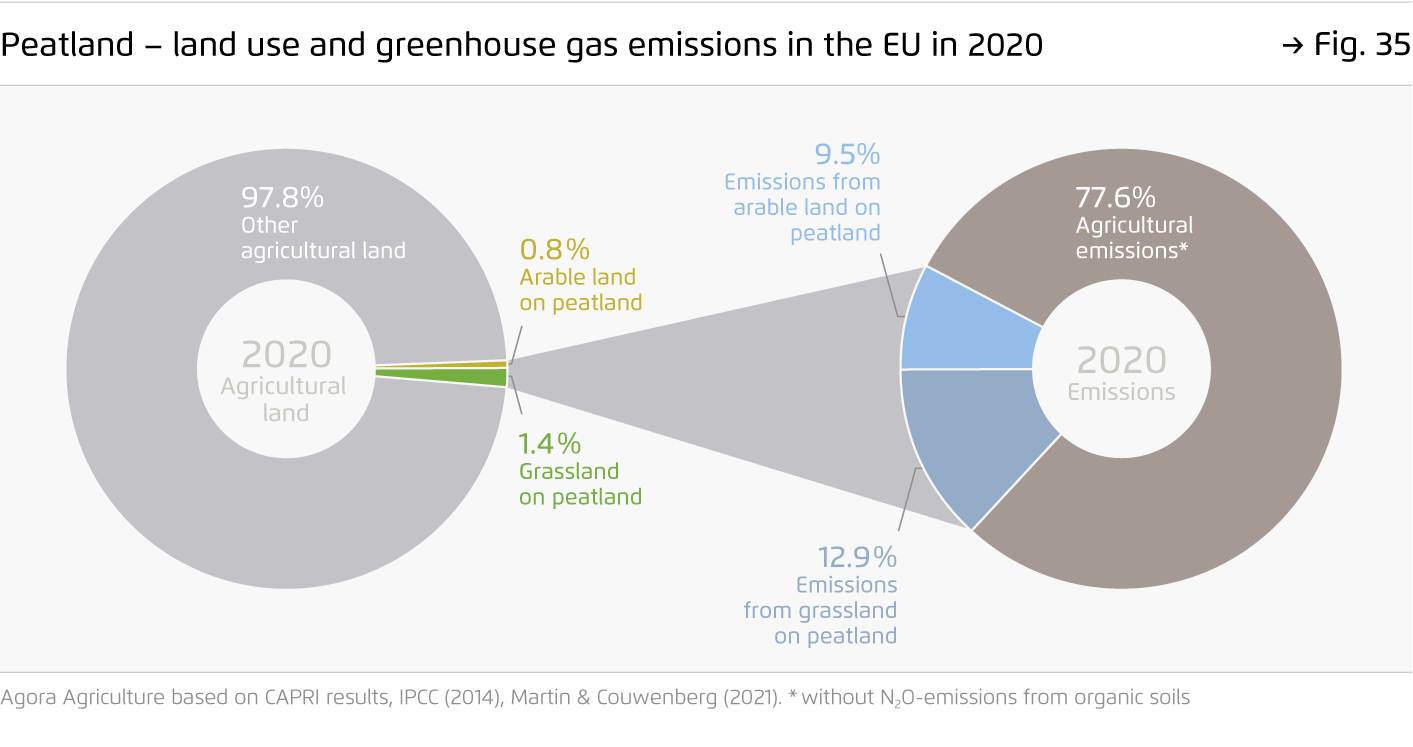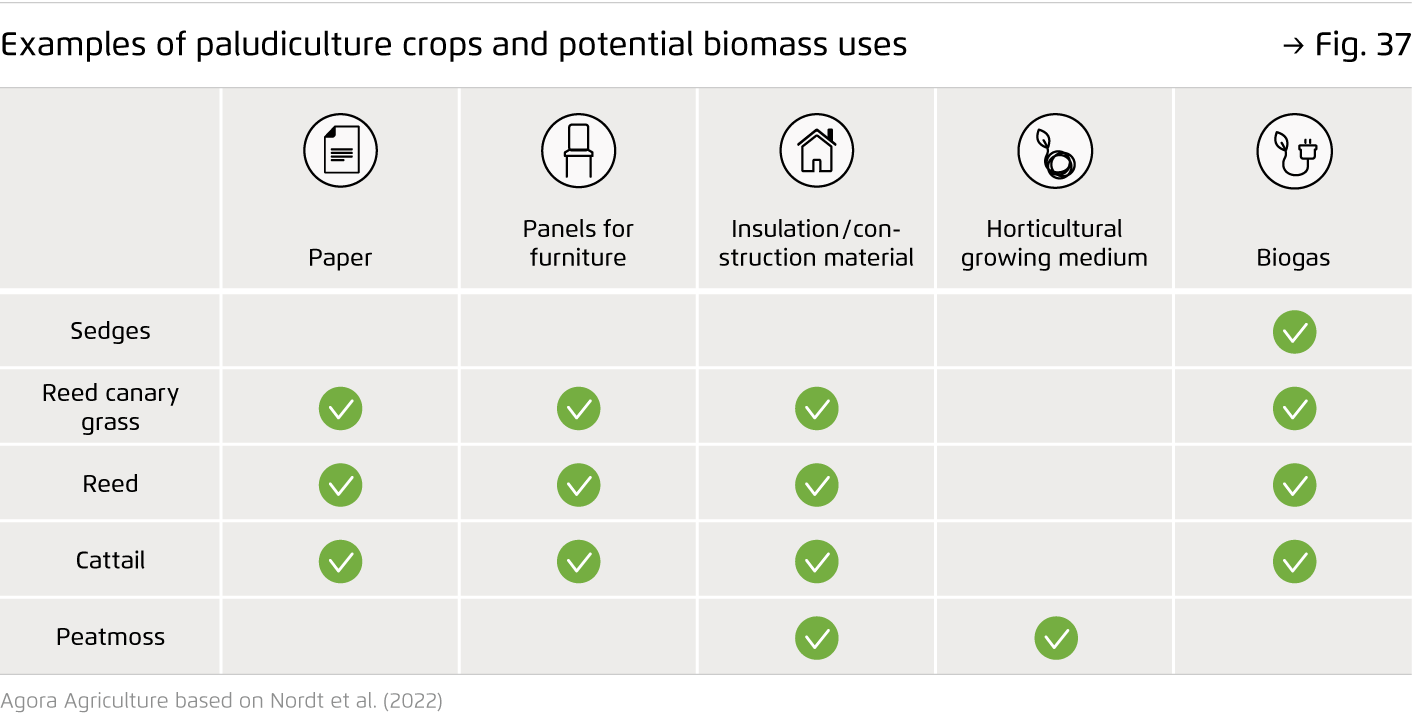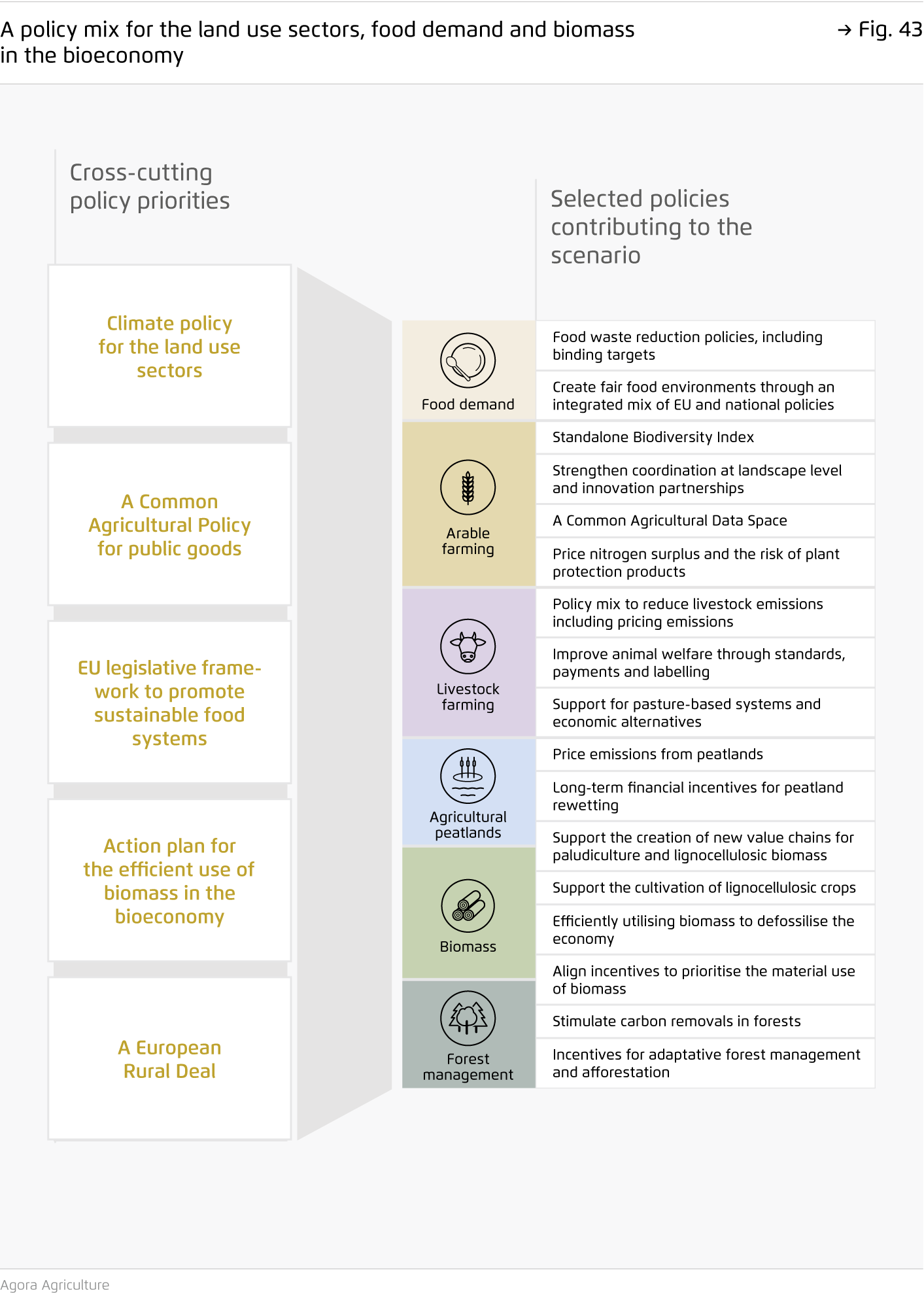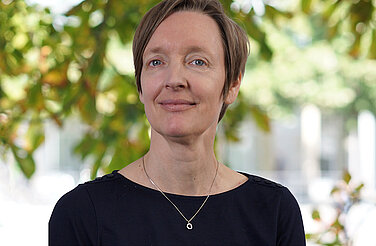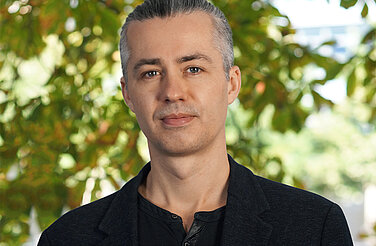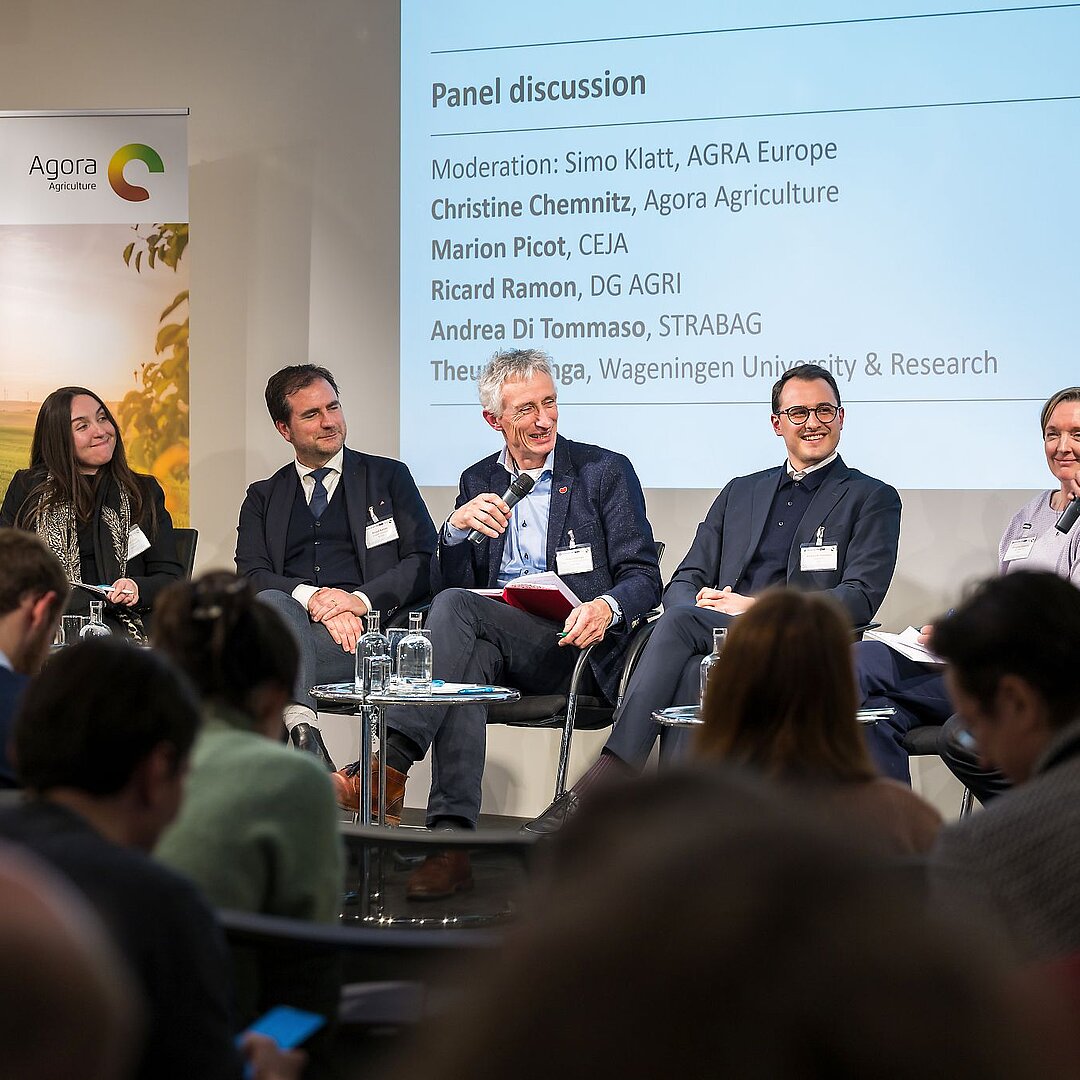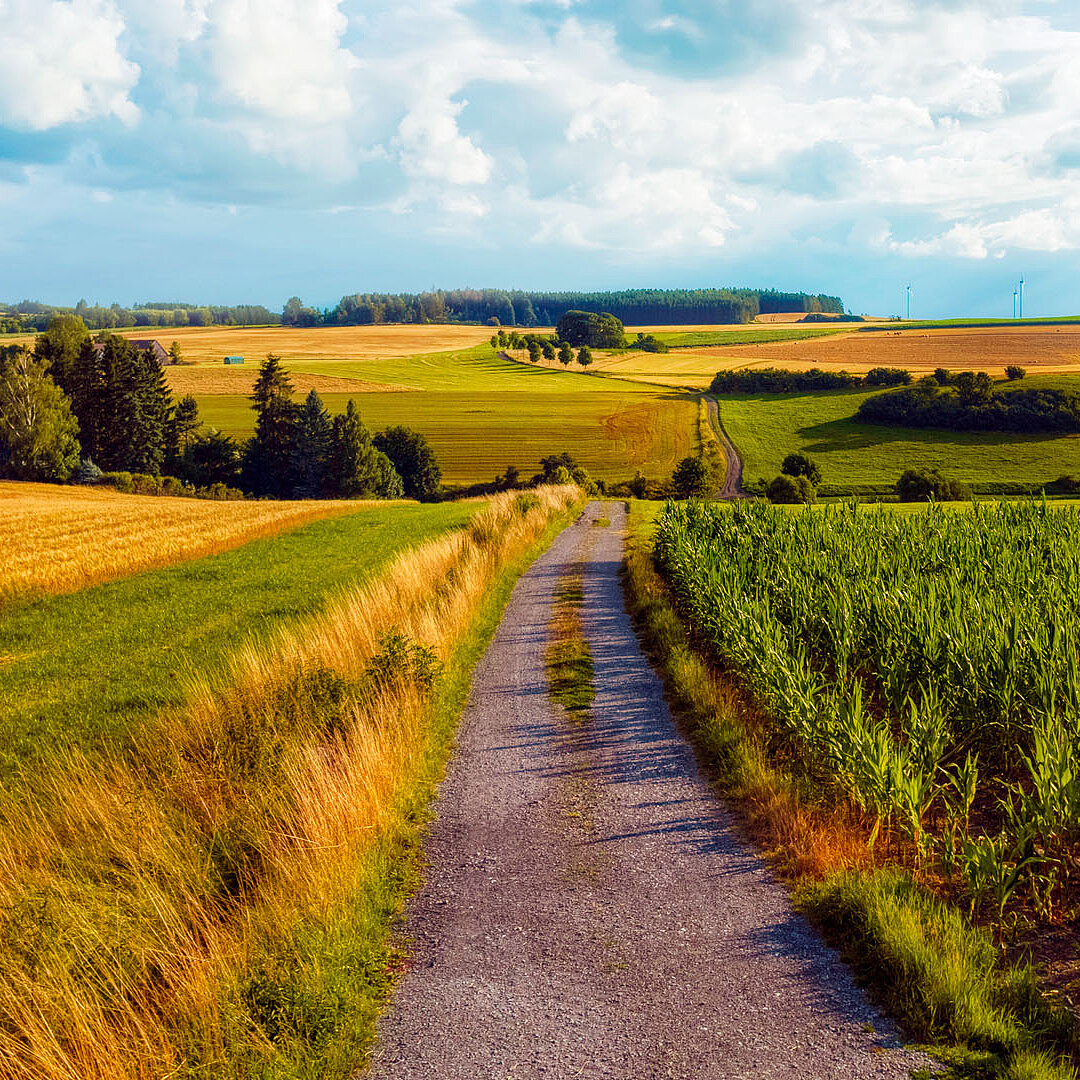-
Agriculture and forestry can substantially increase their contribution to achieving climate neutrality, biodiversity protection, human health and other societal sustainability objectives.
However, this potential is hindered by an insufficient policy environment. A main roadblock for creating enabling policies has been the lack of a shared vision for the future of the land use sectors.
-
By mid-century, agriculture and agricultural peatlands in the EU can cut their greenhouse gas emissions by 60 percent – in sharp contrast to their historically stagnating emissions.
Carbon removals can be increased in agriculture and be stabilised in forests. Biodiversity loss in agricultural landscapes can be reversed, while biomass production for the bioeconomy increases. This is possible while producing sufficient food, improving animal welfare, lowering agricultural imports and increasing agricultural exports, thereby contributing to global food security.
-
Efficient land use and a more sustainable demand for food, feed and other biomass are the key levers for realising these sustainability potentials.
This requires economic incentives for the provision of public goods, such as carbon removals and biodiversity protection, which create opportunities for farmers and forest owners. Additionally, fair food environments for consumers can support and incentivise sustainable food consumption including more plant-rich diets and less food waste.
-
The 2024–2029 EU legislative period is crucial, as it offers the opportunity to build an enabling policy environment.
Relevant components are an ambitious climate policy for the land use sectors, a Common Agricultural Policy that focuses on the provision of public goods, a legislative framework for sustainable food systems, an action plan for the efficient use of biomass in the bioeconomy and a European Rural Deal that supports rural areas in realising future economic opportunities.
Agriculture, forestry and food in a climate neutral EU
The land use sectors as part of a sustainable food system and bioeconomy
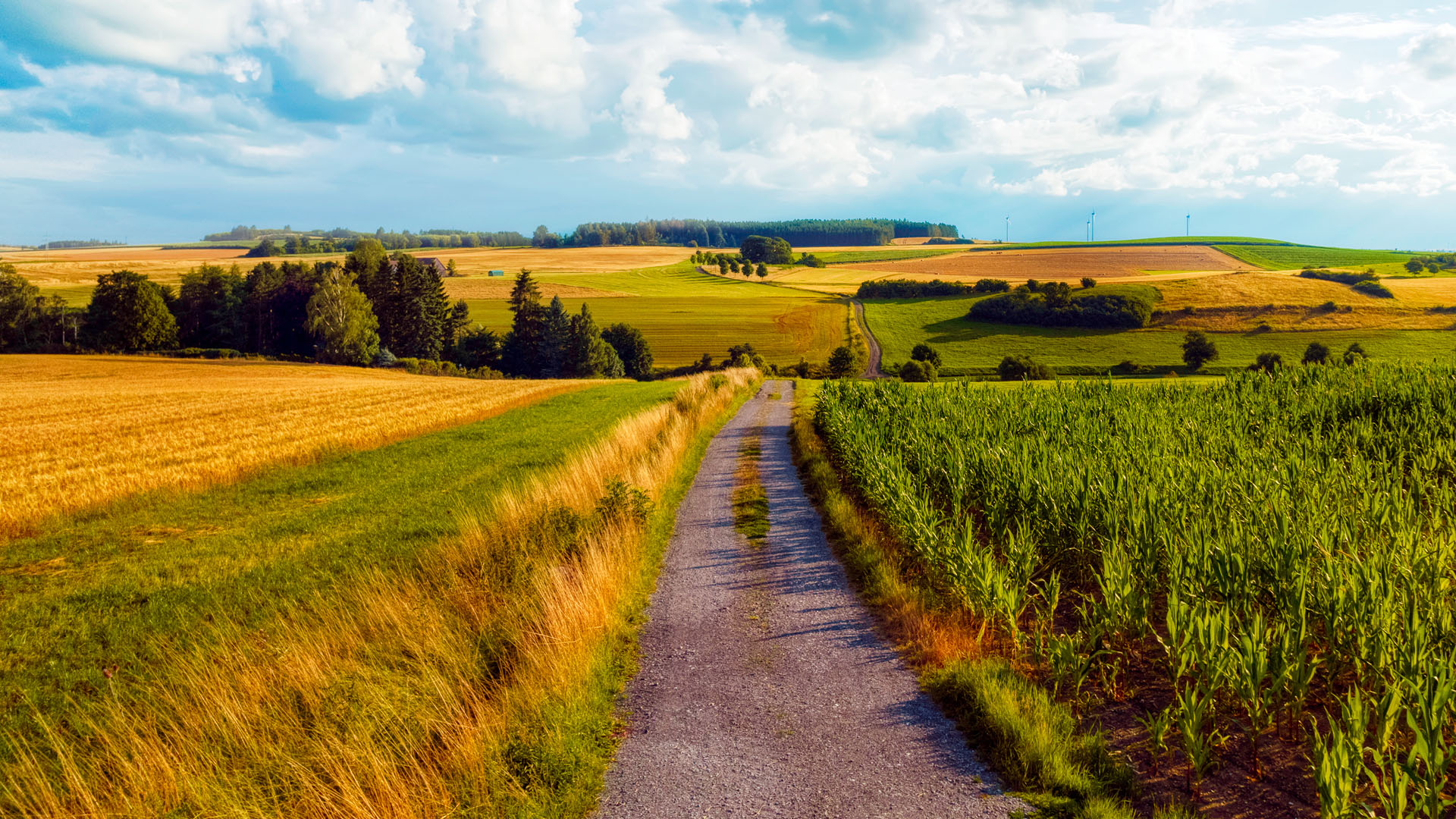
Preface
The land use sectors agriculture and forestry are vital for societal well-being. They provide safe, nutritious food, and have large potential to increasingly contribute to a climate neutral economy, enhance biodiversity and environmental quality, as well as prosperity in rural areas.
While pathways to climate neutrality are well defined for many economic sectors, there is currently no integrated analysis of the potential of agriculture, forestry and food to deliver on sustainability objectives within the EU. This study contributes to closing this gap by presenting a scenario for the land use sectors as part of the food system and the bioeconomy in a climate neutral EU by mid-century. It also outlines policies that incentivise and value the contributions of agriculture and forestry to societal objectives and strengthen future-oriented land use sectors.
We developed this analysis over the past two years and engaged in intensive stakeholder dialogues with scientists, policy makers, administrators and representatives from the agricultural, forestry, food and bioeconomy sectors, as well as environmental and other civil society organisations. The constructive, solutions-oriented approach of all stakeholders involved helped shape our analysis.
We hope this study serves as a useful contribution to the discussion on the future role of agriculture and forestry as part of the food system and the bioeconomy, and we look forward to continuing the exchange.
We would like to point out changes in content compared to version 1.0 on page 44.
Key findings
Bibliographical data
Downloads
-
Study
pdf 10 MB
Agriculture, forestry and food in a climate neutral EU
The land use sectors as part of a sustainable food system and bioeconomy
-
Annex
pdf 1 MB
Agriculture, forestry and food in a climate neutral EU
The land use sectors as part of a sustainable food system and bioeconomy
All figures in this publication
Key measures and resulting societal impacts
Figure A from Agriculture, forestry and food in a climate neutral EU on page 10
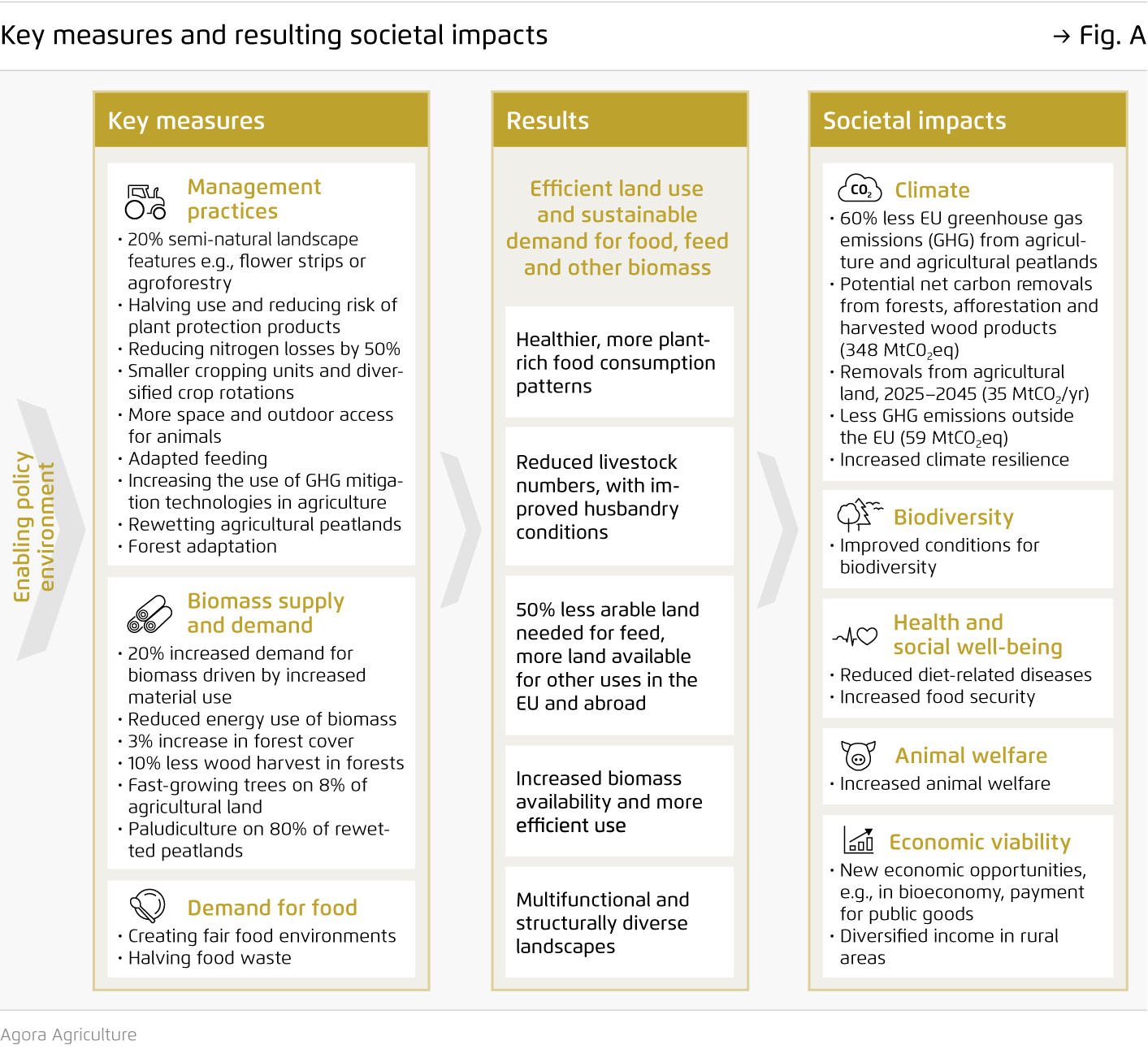
Reduction of greenhouse gas emissions from EU agriculture and agricultural peatlands between 2020 and 2045*
Figure B from Agriculture, forestry and food in a climate neutral EU on page 12
